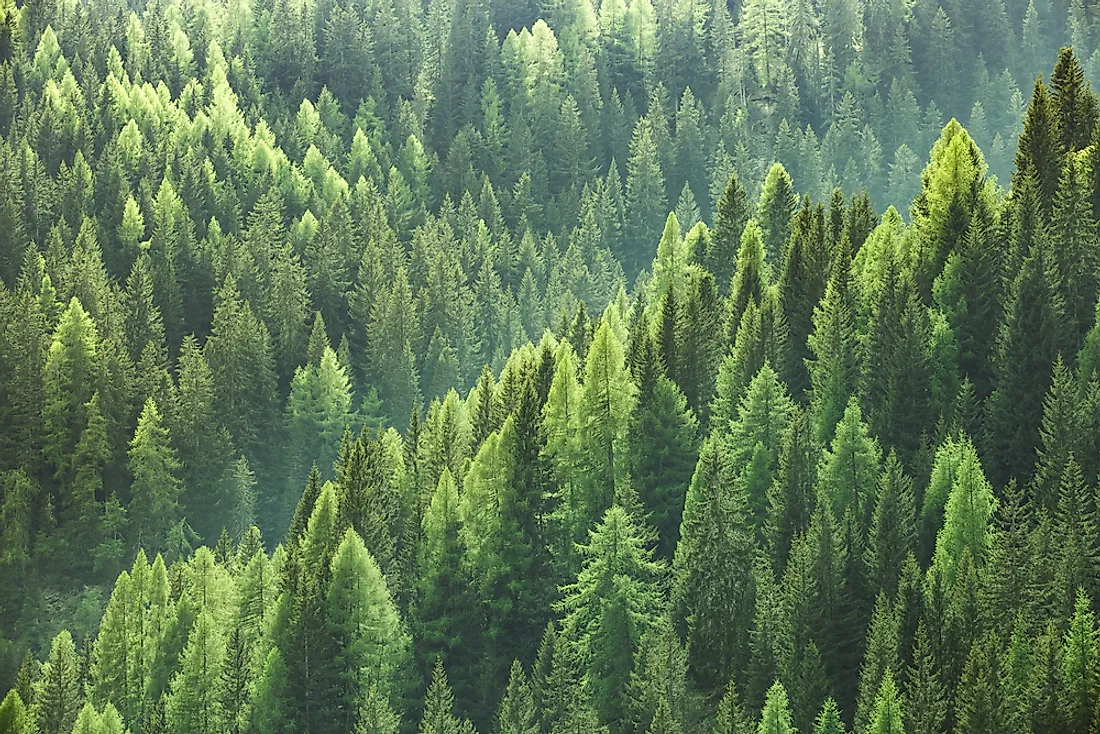Did You Know That There Are More Trees On Earth Than Stars In The Milky Way?

How Many Trees on Earth?
Scientists have suspected that the method of calculating the number of trees on our planet, at least based on the national inventory directories, may not be accurate. Countries with large forests contribute data on the approximate number of trees in different regions of the country. However, scientists have gone further and invited volunteers, representatives of environment organizations, and students alike to participate in the counting of trees located on predetermined areas of the earth's forest. Then, computers can analyze the same areas based on a satellite imagery. Experts compare the figures obtained by counting by hand and computer calculations. Thus, in the calculation model, three sources were used: satellite, calculation conducted by thousands of volunteers around the globe, and inventory directories for natural resources.
Before the start of this large-scale research, a team from Yale University (in New Haven, Connecticut, U.S.A.) had reached an estimated number of 400 billion trees, a sum based on previous researchers' calculations. For years, all of the predictions regarding the increase of CO2 in the atmosphere, as well as the scale of deforestation, had been based on the government-provided data. After new studies, a new, initial figure had grown to eight times what was originally calculated, and amounted to am unimaginable 3 trillion trees! Thus, it was concluded that there are about 420 trees for every one person on our planet.
Not So Easy With the Galaxy
To calculate the number of stars in the galaxy, astronomers have to evaluate the mass of the galaxy. This can be done by observing the galaxy's rotation about its axis. Another component of such a calculation is a spectral analysis, conducted with the use of a spectroscope. Over the last 30 years, there have been other models used to calculate the number of stars in the Milky Way, varying from the mathematical to the quantum. This has led to different opinions, because each method offers its own way of measuring the average mass of the stars in our Milky Way. Among the most common views stands the lower bound in the calculations, which figure there are around 100 billion stars. Conversely, the upper bounds of such forecasts claim 400 billion stars lie in the Milky Way galaxy in which our own solar system is located.
How to Apply Such Huge Numbers
The number of stars can be seen by some as a trivial bit of data, as such does not affect the decisions that people make in agriculture, minerals research, and other practical aspects of development in the global economy. With trees this is not the case, as their newly discovered numbers may soon became the subject of increased discussions ranging from environmentalists to corporations' presidents to world leaders. Yale University researchers, in a later study, showed a distributed array of trees on the planet, where Canada, Siberia, and Scandinavia ranked first in the number of trees in the band with a temperate climate. These three regions are said to be the "lungs of the planet", from which the rush of fresh air is felt most clearly in June of each year following springtime growth in northern latitudes. During the summers, there is an active release of oxygen which is carried by winds across the planet. In the fall of the year the process changes, and trees begin to absorb the carbon dioxide accumulated in the atmosphere. Maintaining the number of trees on the planet is necessary for the annual "inhaling and exhaling" which supports life on earth. This "exhaling" of fresh oxygen also occurs around December of each year in southern latitude forests, and to some extent almost all year-round in tropical forests.
Neither Too Much, Nor Too Little
Once the two-year work of counting trees came to a conclusion and the final figure 3 trillion was given, a number of scientists came up with the question as to whether it is too large a sum, acceptable, or threateningly too low. Does it mean that 15 billion trees cut down every year by the humans are within the normal ranges? Since the 19th Century, public opinion has largely been that the felling of trees adversely affects the state of the planet, and forecasts had been made that in 50 years the earth might be left without a single tree in a virgin forest setting. Modern scientists do not share those fears, but instead insist on formulation. They cite that 3 trillion trees are not too much, neither is it too little, and have urged environmentalists not to forgo their efforts to protect and preserve trees on our planet.











